Not only is it a strategic route for transporting weapons and goods, the Ho Chi Minh Trail at sea is also a symbol of the resilient and creative spirit of our army and people in the struggle for national liberation.
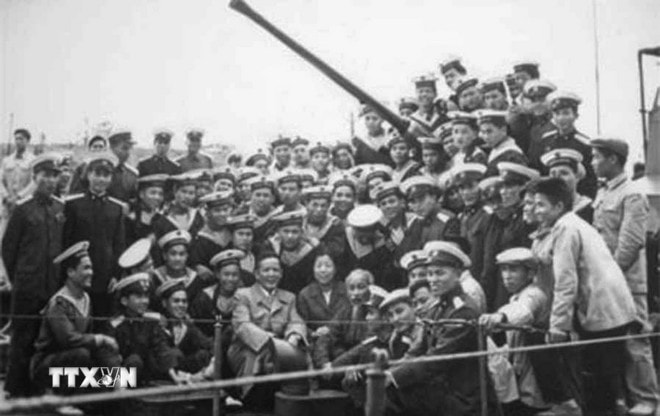
On October 23, 1961, Military Transport Group 759 was established, opening a new method of transport in supplying weapons to the Southern battlefield - the Ho Chi Minh Trail at sea.
Despite many difficulties and challenges, this route operated effectively, contributing greatly to the final victory of the resistance war against America to save the country.
Not only is it a strategic route for transporting weapons and goods, the Ho Chi Minh Trail at sea is also a symbol of the resilience, creativity and determination of our army and people in the struggle for national liberation.
Establishment of Group 759 - strategic vision of our Party
After the Geneva Agreement in 1954, the belligerent American forces and their henchmen blatantly broke the agreement, divided our country, and turned the South into a new-style colony and military base.
Faced with that situation, the 15th Conference of the Party Central Committee (Term II) determined that the task of the Vietnamese revolution in the new period was to use the "path of violent revolution" to liberate the South.
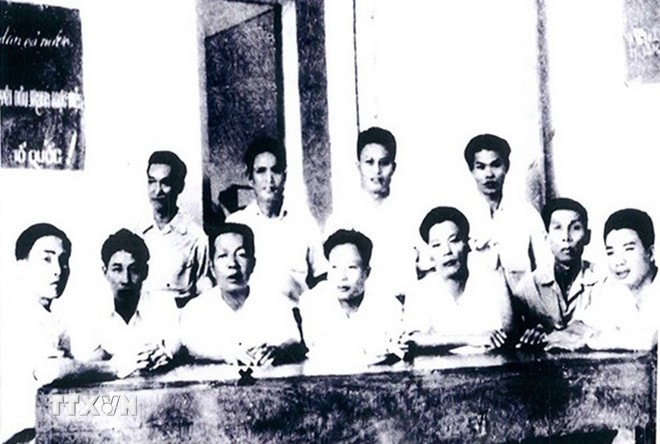
Following the Politburo's directive, in May 1959, the Central Military Commission decided to establish the Department of Research on Military Support Operations for the South, opening a comprehensive support strategy for the national liberation cause.
To implement this policy, on May 19, 1959, the Special Military Task Force (the predecessor of Group 559) was established, responsible for opening a transportation route across Truong Son to provide weapons, equipment and forces to the southern battlefield.
However, transportation by road encountered many difficulties due to the rugged terrain and close surveillance by the enemy. Therefore, the Central Committee realized the need to open a sea transport route to increase support for the South more effectively.
In July 1959, Battalion 603 was established with the mission of researching methods of transporting weapons by sea.
To keep it secret, this battalion took the name “Gianh River Fishing Group,” with initial equipment consisting of four wooden boats with a capacity of 15 to 20 tons, disguised as Southern fishing boats.
By the end of 1959, preparations for sea transports were basically completed.
In early 1960, Company 1 of Battalion 603 organized the first sea voyage with the mission of transporting 5 tons of weapons and medicine to the battlefield of Zone V.
However, this trip was unsuccessful when the boat was discovered by the enemy. 6 sailors on board were captured, of which 5 were killed, only comrade Huynh Ba survived and was returned in 1974. The Central Military Commission decided to temporarily suspend the activities of Battalion 603 for further research.
In early 1960, along with the Ben Tre Uprising movement, the revolutionary movement of the Southern Delta provinces shifted to an offensive position and became a widespread uprising movement.
To meet the requirements of transporting weapons and goods to support the battlefields of the South and South Central Coast, while the road transport of Group 559 on the Truong Son mountain range has not yet reached; the Military Commission continued to direct the General Staff to urgently study a new project on building and organizing a maritime transport force to support the battlefields of the South and Zone 5.
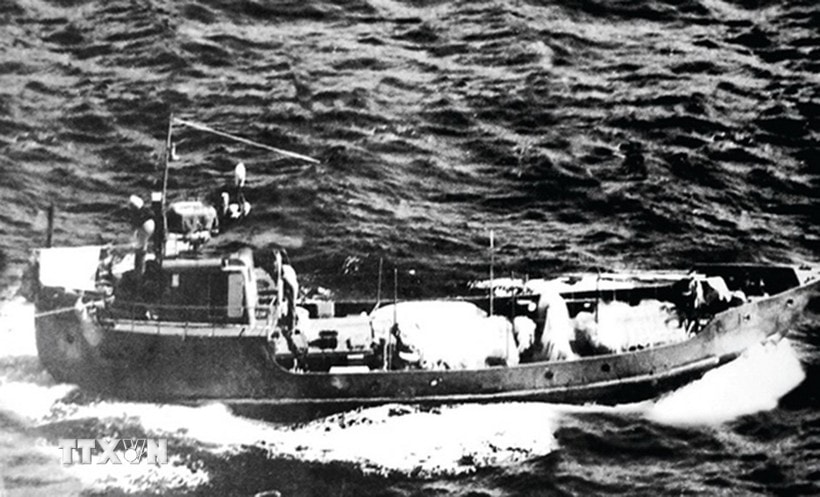
The Politburo instructed the Central Office for Southern Vietnam to direct coastal provinces in the Central and Southern regions to proactively prepare ports and yards and organize boats to cross the sea to the North, both to explore and grasp the enemy's situation, study sea transport routes, and receive weapons to promptly supply to the Southern revolution.
On October 23, 1961, the General Command officially issued Decision No. 97/QP, establishing the 759th Water Transport Group, with comrade Doan Hong Phuoc as Group Leader.
Group 759 was tasked with purchasing vehicles and organizing the transportation of weapons to the southern battlefield by sea. This was an important turning point, marking the birth of the Ho Chi Minh Trail at sea, one of the strategic transportation routes with great influence in the resistance war against the US to save the country.
October 23 every year then became the traditional day of Group 759, later the 125th Naval Brigade, and also the anniversary of the birth of the Ho Chi Minh Trail at sea.
The birth of Group 759 demonstrated the strategic and creative vision of the Politburo, the Central Military Commission and the General Command.
Not only is it a strategic route for transporting weapons and goods, the Ho Chi Minh Trail at sea is also a symbol of the resilience, creativity and determination of our army and people in the struggle for national liberation.
Ho Chi Minh Trail at sea - a strategic route that contributed significantly to the nation's victory
The establishment of Group 759 on October 23, 1961 opened a new phase in the transportation and supply of weapons to the southern battlefield, contributing significantly to the victory of our nation.
In 1960, the Dong Khoi movement won, the revolution in the South changed dramatically, and the battlefield situation changed in a direction favorable to us.
To save the situation and retake lost areas and residential areas, in early 1962, the US imperialists implemented the "Special War" strategy to sweep and herd people into strategic hamlets on a large scale, put millions of Southern farmers into concentration camps, separate the revolutionary forces from the people; increased artillery fire, bombing, and spraying of toxic chemicals.
Faced with that situation, the Resolution of the Politburo on the immediate tasks of the Southern revolution clearly stated: “… Actively build forces in all aspects, especially building and developing the concentrated armed forces of the region and military zones…”
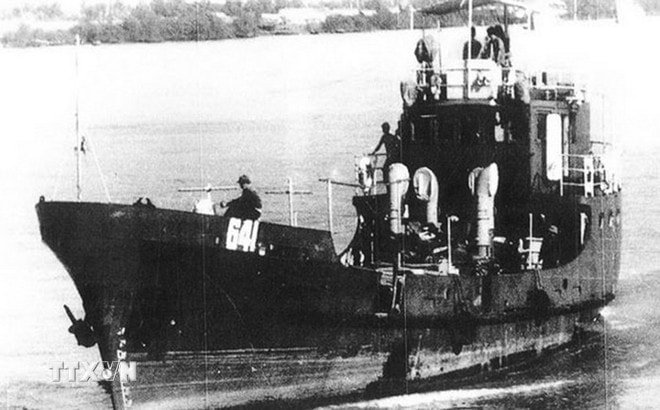
Implementing the policy of the Politburo and the Central Military Commission, in April 1962, Group 759 successfully organized reconnaissance boats to open a sea route from North to South.
On the night of October 11, 1962, Group 759 continued to organize a wooden motorboat, converted into a fishing boat without a registration number, carrying 30 tons of weapons from Do Son wharf (Hai Phong) across the sea to the South and safely arrived at Vam Lung wharf (Ca Mau) on October 19, 1962.
After the first successful trip, in 1962 and early 1963, also using secret transportation methods, disguised as fishing boats, Group 759 successfully organized 28 unnumbered trips, with more than 1,300 tons of weapons and goods brought to the Southern battlefield, serving the Southern people in the resistance war.
In August 1963, the Central Military Commission decided to assign Group 759 to the Navy. On January 29, 1964, the Ministry of National Defense decided to change the name of Group 759 to Group 125.
During 3 years (1962-1965), Group 125 organized 89 train trips, supporting the coastal provinces of the battlefields of Zone 5, the South and the extreme South Central Coast with nearly 5,000 tons of goods, mainly weapons and ammunition.
The weapons arrived at the battlefields of the South, the South Central Coast and Zone V on time, promptly responding to the battlefields, directly contributing to the armed forces of the South, the South Central Coast and Zone V to quickly develop the offensive, winning many glorious victories such as the victories of Ap Bac, Dam Doi, Cai Nuoc, Cha La, Van Tuong, Ba Gia, Binh Gia...; thereby defeating the "special war" strategy of the US imperialists and puppets on the battlefield of the South.
However, after the "Vung Ro incident" (Phu Yen) in February 1965, the coastal Ho Chi Minh Trail was exposed, the enemy increased patrols to prevent and combat infiltration, Group 125 had to change its operations, transporting goods by international maritime routes, secretly and suddenly breaking in, bringing goods to receiving ports.
In 4 years (1965-1968), we organized 27 trains, of which 7 reached their destination, transporting more than 400 tons of weapons to the battlefield. The remaining trains either had to return, were attacked by the enemy, or were forced to self-destruct in dangerous situations.
After the General Offensive and Uprising in the spring of Mau Than 1968, taking advantage of the moment when the enemy stopped bombing the North, Group 125 transported a large amount of goods and weapons to the border area to hand over to the localities, and Group 559 transported them to the battlefield in the South.
Since late 1970, after the sea transport route through Sihanoukville port (Cambodia) was cut off by the enemy, officers and soldiers of Group 125 proactively sought a new route, following the eastern side of the Hoang Sa and Truong Sa archipelagos, through the northeastern sea of Malaysia to the Nam Du archipelago to dock and deliver goods to the provinces of the Southwest.
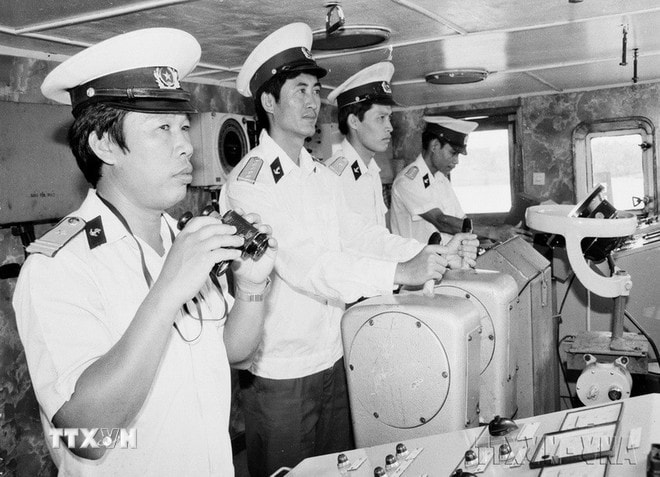
After the Paris Agreement in 1973, Group 125 closely coordinated with organizations and localities to transport a large amount of weapons, ammunition and thousands of officers and soldiers to the South to fight.
In particular, during the 1975 Spring General Offensive and Uprising, the unnumbered fleets of Group 125 successfully transported more than 8,000 tons of heavy weapons, 50 tanks, and brought more than 18,700 officers and soldiers to the battlefield.
Thus, during the period 1961-1975, military transport units on the sea route named after President Ho Chi Minh overcame all difficulties, hardships, and sacrifices, overcame strict control, blockade, and fierce attacks by the enemy, and organized hundreds of ships to set sail and reach their destination.
Hundreds of thousands of tons of weapons, ammunition, technical equipment, military hardware, goods, and medicines; tens of thousands of officers and soldiers from the large rear were sent to the large front line, promptly meeting the human and material needs of the southern battlefield.
The strategic sea transport route, together with the army and people of the whole country, defeated the strategies of "Special War," "Local War," and "Vietnamization of the War" of the US imperialists and made the victory of the historic Ho Chi Minh Campaign, liberating the South and unifying the country.
General Nguyen Tan Cuong, member of the Party Central Committee and Chief of the General Staff of the Vietnam People's Army, affirmed: By successfully organizing the Ho Chi Minh Trail at sea, our army and people have written an epic about the will and creativity of the Vietnamese people in the Ho Chi Minh era, contributing significantly to the great victory of the nation in the historic confrontation with the US imperialists.
Thereby, leaving behind many lessons of strategic significance in the cause of building a revolutionary, disciplined, elite, and gradually modern Vietnam People's Army in the new era.